Panzerkampfwagen 38(t)
Bloody foreigners...
When the Germans were still messing around with Panzer I and IIs, the Czech army rolled with their ČKD LT vz.38 tanks. Those were excellent vehicles, especially for that time, and the Wehrmacht had to admit they were better than anything coming out of Henschel or MAN. So they used them, quite a lot in fact, and by the time the gun was becoming outdated, 38(t) chassis were converted into a range of vehicles: Marder, Hetzer Jagdpanzer 38(t) or the Swedish Stormartillerivagn m/43. The Peruvians bought some too - from the Czechs; those were used in the Ecuadorian–Peruvian War and COIN ops against the Shining Path. The last one of those vehicles retired in 1988, making it possibly the longest serving tanks in the world.
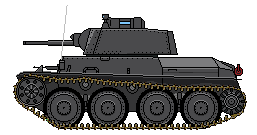
SdKfz 141 / PzKpfw 38(t) Ausf. A > G
The 38(t) base tank didn't change so much over the first years of the war; production run A to D were just straight copies of the Czech design, while models E to G added some bolt-on armour and a Notek headlight.
- RAL 7016
- 37mm Škoda A7 gun / 3,7cm KwK38(t)
- Praga TNHPS/II engine
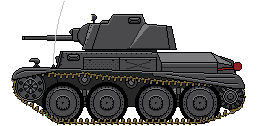
PzKpfw 38(t) "neuer Art"
In 1943, some attempts were made to upgrade the existing 38(t) chassis: welded armour, a new engine and some more bits. It was dropped in favour of the Luchs, which itself wasn't very succesful. Of this "new type" (which is what "neuer Art" means), 15 were built and I hope used for something more useful. This is a prime example of the wrong way to do things: where the Allies had only a few vehicle types, the Germans had hundreds, wasting them time, monney and resources. And, it's a bit ugly.
- Redesigned turret
- Front + rear track shields
- Optional: 4.7 cm KPÚV vz. 38
38(t) derivatives
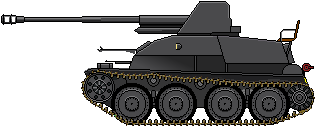
SdKfz 139 / Marder III / PzKpfw 38(t) with 7.62cm PaK36(R)
By 1942, the 38(t) light tank was becoming obsolete. However, the Germans had captured a large number of Soviet field guns. A resourceful solution was to mount these guns on modified 38(t) chassis, creating a mobile tank destroyer - the Marder III. This first version wasn't very elegant and it didn't offer a lot of protection to its crew, but it could quickly respond to threats and disengage when necessary.
- RAL7016
- 7.62 cm Pak 36(r) / 76mm "Ratsch-bumm" M1942
- A splash guard for the driver
- No cooling vents fore the brakes - bad isea!
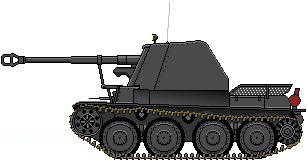
Marder III Ausf. H
Taking the Marder III idea a step further, the Germans introduced the Ausf. H in 1943. This version swapped the captured Soviet gun for their own powerful 7.5 cm PaK 40 cannon. This seriously boosted its firepower, making the vehicle a more effective tank destroyer. While it still lacked the armor of a true tank, the Ausf. H offered a good balance between firepower and mobility.
- 7,5cm PaK 40
- Better crew protection (from the front)
- Moar dakka
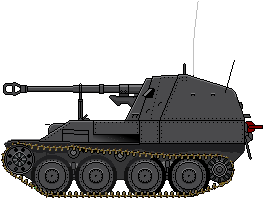
Marder III Ausf. M
Until the introduction of the heavy Jagdpanther / tigers, the Marder III M was a very dangerous anti-tank weapon. Faster and armed with the same 7,5cm PaK 40, it also addressed a key limitation of the earlier models - the crew's vulnerability – by having a partially enclosed fighting compartment. However, the top remained open, leaving the crew vulnerable to grenades and Molotov cocktails, lobbed by enemy infantry or partisans.
- Redesigned superstructure
- Praga AC engine in the middle of the vehicle (like a Honda NSX)
- Lower profile